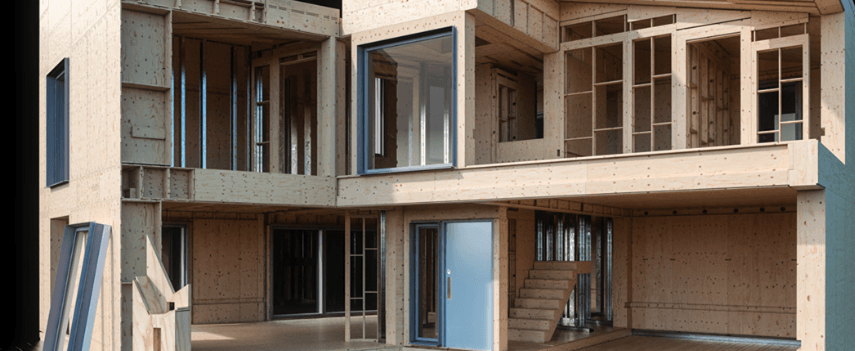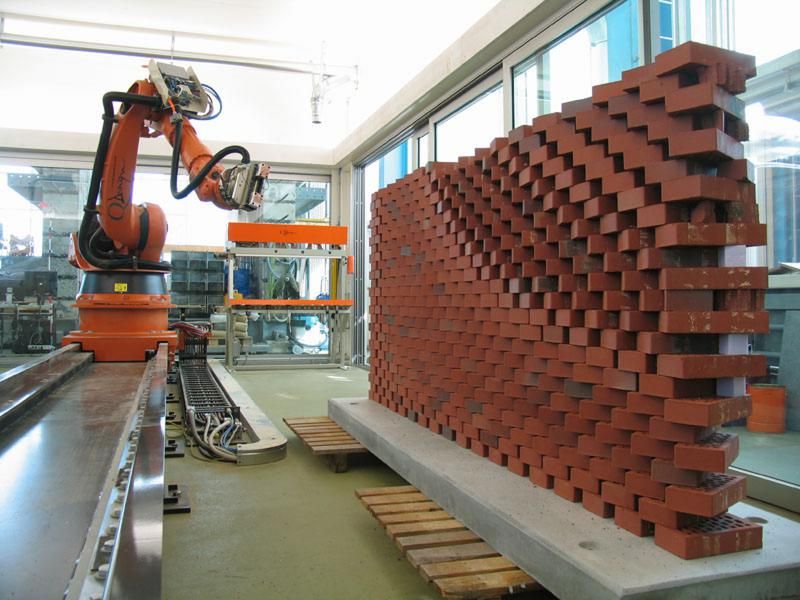Digital Construction Methods Are Rewriting Business Models
)
As digital processes ' from building information modeling (BIM) to 3D printing ' replace traditional ways of working, the design and construction of the built world are being fundamentally changed.
Bruce Bell says home builders have a problem: The transformation of society by the increased use of technology means the pool of available workers who favor outdoorsy construction jobs is shrinking. Bell is managing director at Facit Homes, a home manufacturer in the UK, and he explained that the company has noticed an increase in job site problems stemming from misread plans and botched construction details. Fewer skilled construction workers means a greater need to send experts to individual home sites, increasing costs. But Bell thinks Facit has found a way to fight fire with fire ' by using digital construction.
'Modern digital manufacturing techniques have revolutionized the way we make things,' says Bell. 'We asked ourselves if this technology could bring more clarity and certainty to creating homes, and provide a better service and end product for the customer. Could we take house building into the digital age and manufacture homes?' Yes, they can ' thanks to years of research and development, testing, and refining the process, Bell says. Facit Homes is not alone in turning to digital construction methods. For some, it means increasing the use of structural engineering software, or using jobsite data gathered using sensors, cameras, and scanners. To others, it means combining elements of factory fabrication with on-site assembly, extending building information modeling (BIM) beyond design. More than a specific use of technology, digital construction is about new construction business models that put digital tools at the heart of construction processes.
Facit's innovations in the use of digital fabrication techniques and other uses of computer technologies have led to industry honors. The UK television program Grand Designs devoted an episode to Facit and the 'world's first computer-cut house.' Bell says what they are doing is more than prefab in a factory; it will be impossible to build enough factories to manufacture all the homes required. 'We are looking bringing digital tools to traditional techniques on a small scale,' says Bell. 'We call it digitizing the analog.'

A typical Facit Homes project uses many of these processes:
- Proceeding directly from the BIM model to manufacturing, with industrial designers working alongside architects
- Creating 'chassis' sections for easy assembly ' a kind of 'big wooden Lego' design approach
- Capturing onsite spatial data daily to monitor on-site workflow
- Coordinating communications with job wikis and Google Hangout streams
- Using Wi-Fi cameras for real-time reporting and remote management.
The result is factory-free home manufacturing. 'Everything fits in a shipping container,' says Bell. Building the pieces can happen in a small shop, and final assembly takes place at the job site, minimizing overhead costs.
Disruptive Visualization
'The built environment is ripe for disruption,' says Dipa Joshi, a director at London-based Assael Architecture. 'The use of BIM, VR [virtual reality], IoT [Internet of Things], and modular technology in the design and management of housing and infrastructure is creating smart cities around the world.'
Much of Assael's work is in build-to-rent; Joshi says clients are as eager as the designers to push a digital construction business model. Often the process starts with an aggressive use of visualization. Assael worked with the client on an apartment project in London's Canada Water neighborhood to raise approval from 50 units to 195 by using 'beautiful models and virtual reality walkthroughs,' says Joshi. 'We proved exemplary design requires great visualization.' The Assael team used Vectorworks BIM software to produce electronic project execution plans that combine models, details, and visualizations in a single deliverable.
Assael is pushing the digital construction envelope in other ways, too. For a large urban planning project in China, artificial intelligence algorithms were used to analyze existing traffic patterns ' auto and pedestrian ' to suggest better business and residential placements. The firm frequently uses 3D printing to create physical models for project review. And in her role as Mayor of London's Design Advocate, Joshi is an outspoken advocate for blockchain technology as a solution to nagging construction management problems. Blockchain's secure digital ledger could 'restore trust in the house-building industry,' Joshi says. 'Full transparency on the whole supply chain of data will be guaranteed from inception to delivery.'
Robotic Masonry Guilds
Digital design makes it possible to explore more upfront possibilities, notes architectural researcher Stefana Parascho at Gramazio Kohler Research in Zurich, Switzerland. And digital construction methods 'allow for far more differentiation than manual processes.' So the question becomes, how does all this explosion of possibility affect processes? According to Parascho, freedom in the design process 'needs to be analytically investigated and controlled in order to make use of its full potential.'
Parascho and her associates are researching robotic fabrication methods. Or more specifically, 'cobotic' fabrication, in which humans wield intelligent robotic devices as tools. Multiple humans using multiple cooperating machines can perform 'material manipulations on a shared fabrication task.' Sounds great, but Parascho says the possibility comes with new challenges. Designers must consider the reach and dexterity of robotic tools. The ability of a robotic arm to hold position in 3D space, for example, might make new techniques and new design elements possible. Welding is 'an easy task' for robots, notes Parascho; they have been used in manufacturing for years. 'The [construction] industry need to develop' welding robots as a resource, she believes.

Robotic bricklayers offer the ability to deploy robotic teams. Little ones fetch bricks and create small assemblies; larger robots can move the assemblies into final position. Dry masonry could allow for temporary brick buildings assembled and disassembled by robots.
One advantage of designing and building with robots is that everything can be tested virtually. The code that runs a physical robot can also control a robot in virtual reality. The bricks can 'weigh' the same to both robots. If the robots are to be custom-built for construction, it is not necessary to build physical prototypes for testing. 'It is important to get the full feedback loop,' adds Parascho. 'We need physical knowledge in the digital, and we need digital knowledge to improve the physical.'
'
Source: Cadalyst
London Build is the leading building and construction show for London. Gain access to 8 dedicated conferences, 300+ exhibitors across 9 show zones, the construction industry's very own Oktoberfest, entertainment and much more. Promote your brand, open new business opportunities, win contracts and gain access to the latest market intelligence in London and the wider region.
.png)
